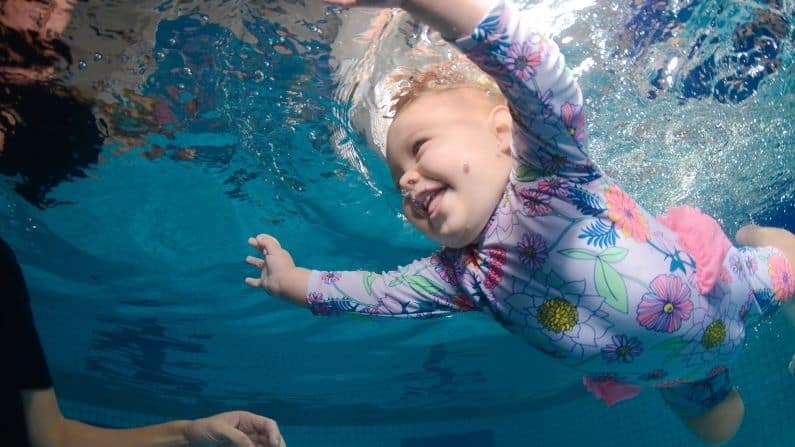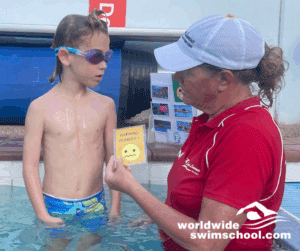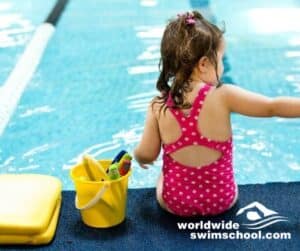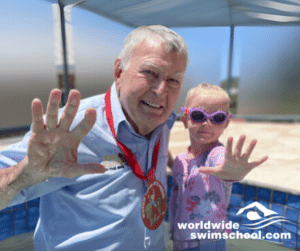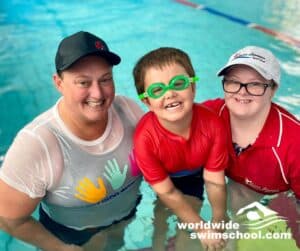Teaching the beginner swimmer may be difficult because they can often be afraid of the water. The parent or caregiver, although unintentional, may frighten their child in an attempt to keep them safe around the water.
For example, statements such as “Come back from the side of the pool or you’ll hurt yourself,” or “Don’t go near the pool, its deep,” will ingrain into the child’s psyche. As a result, the child can remember this as they participate in their first swimming lesson.
Teaching the Beginner Swimmer
Before structured teaching and learning takes place, you should help children to feel relaxed and comfortable in the water. Apprehensive or frightened children will naturally have a serious barrier to learning. In many cases, they will not even attempt some of the simplest learn to swim activities.
Therefore, teachers should spend time establishing a comfortable and secure learning environment for their pupils. This acclimatising period is often referred to as water familiarisation and is best done in a fun way in shallow water. Simple activities such as lying on their back in very shallow water with the ears submerged or rolling over kicking fast with lots of splashing without even putting the face under are two very simple water acclimatisation exercises.
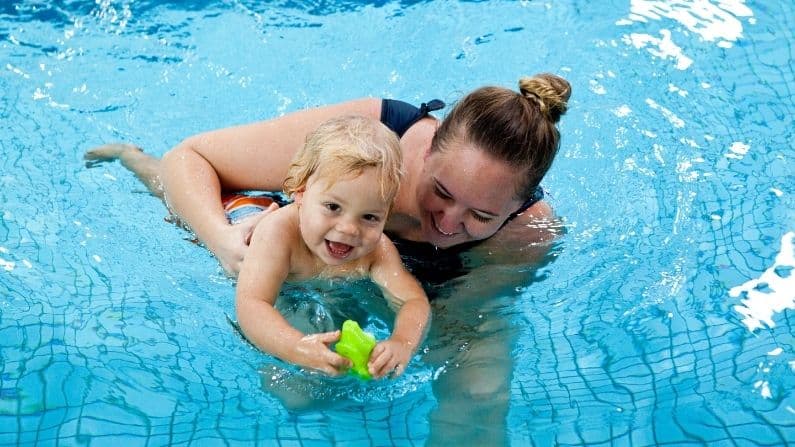
Be Aware of Levels of Discomfort
If children have not been regularly exposed to the water around 2 years of age or older, they may show signs of discomfort, apprehension or fear. It will not be easy to condition these children for submersion as we do with young babies. These children must be handled quite differently and must initiate their own submersions. They must never be forced underwater for any reason whatsoever.
With practical teaching experience, swimming teachers will soon be able to observe and recognise these fears. The children’s tell-tale body language will alert the teacher they will be able to identify common characteristics of a frightened beginner.
Signs of Apprehension:
- Shivering or shaking, even in warm water
- Shutting the eyes and holding the breath
- Clenching fists, shrugging shoulders and observed body tension
- Frequent talking or even crying
- Pulling back as soon as the teacher goes to touch them.
- Arching their back if the teacher tries to support them
Swimming teachers should be aware that children’s early experiences in the water, will determine their future attitudes. For this reason we should aim to make these early learning experiences positive safe and pleasurable in an attempt to shape a love of the water that children will carry with them through to adulthood.
Shallow Water Orientation
Before learning can take place children must feel comfortable. Therefore, shallow water is fantastic for teaching beginners. In fact, for frightened beginners, shallow water is vital.
It allows the child to feel and be in control as they practices basic water familiarisation activities such as walking, jumping, splashing and attempting breath control activities like pouring water over their face or even attempting self-submerging.
Remember, shallow water learning:
- Helps children feel in control and encourages the child’s confidence in the water
- Assists the teacher with a “hands off” approach and allows more independence for the child
- Encourages the child to use their initiative for their own water familiarisation activities
- Allows teachers to assist the child in becoming relaxed much sooner
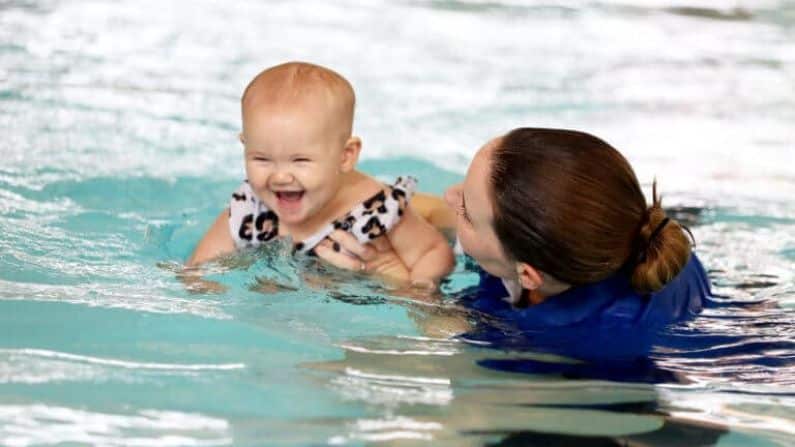
Deep Water Orientation
During deep water orientation, teachers must be extremely vigilant to ensure the safety of their class.
During deep water activities teachers should call on the parents to provide that extra pair of eyes to help with supervision. This type of parental involvement will build a good rapport with parent and child alike.
Remember, deep water learning:
- Helps children rapidly grow in confidence as they feel their own buoyancy
- Ensures children progress sooner if they are kept busy and active and avoid behavioural distractions
- Encourages socialisation as first trips to deep water may include having the class all submerge together
- Boosts maximum practice time as once the teacher see the students’ confidence growing, they can set up a deep water follow the leader circuit.
Lesson planning is the key when teaching beginners in deep water. Teachers should look to utilise teaching benches, ledges, deck level pool edge, rails, ramps or ramps depending on what is available at your swim school.
Join our community and keep up to date with new articles, special offers - it is free to join!
Looking for more information on learning how to swim - don't go past the Swim Library.
